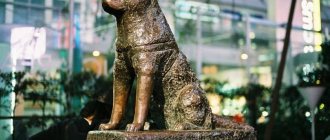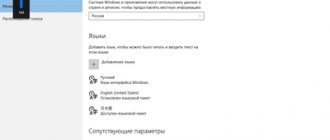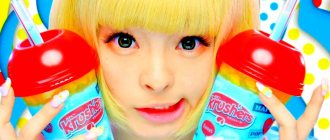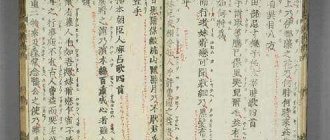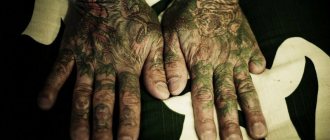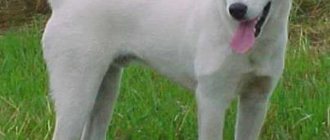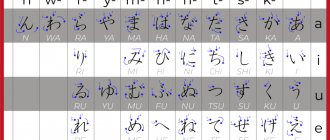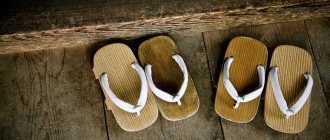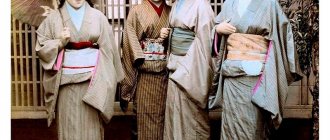Japanese dog breeds share some of the same distinct characteristics. They are popular and known all over the world. The name of all breeds from this country has geographical implications. To a person who is not familiar with the world of dog breeding, it may seem that the breeds bred in Japan are completely similar to each other, but this statement is not true.
Animals native to this country have different temperaments, purposes and maintenance requirements. And the external similarity of pets from Japan is explained by the tastes of the inhabitants of this country for beauty and other qualities. This played a significant role in the formation of the characteristics of the breed.
Akita Inu
The Japanese Laika belongs to the Spitz group and is the largest of them. Previously, they were called “matagi,” which literally means “bugbear.” This is due to the fact that the animal was originally used to lure large animals during hunting. The breed was bred in an area called Akita, which is known for harsh climatic conditions.
The breed has a distinctive appearance: a large head and triangular-shaped eye sockets. The body of these animals is well developed. Akitas cannot bark for long periods of time, but they are capable of making various snorting sounds.
Akita is well adapted to being kept in a variety of conditions. The abundant coat of wool prevents the breed from freezing even in severe winter. The breed does not require much effort in care; it is enough to comb the coat several times a week and bathe it when necessary. These dogs have an easy-going disposition. They are patient and loyal to children. Their calm temperament makes them ideal animals for people exposed to frequent stress.
Photo and video of a pet
A variety of video materials will help you more fully visualize the external and behavioral advantages of the Akita in various situations. You can form your own impression of the unique Akita Inu breed from the photo.
American Akita
This breed is not recognized by all canine organizations in Japan as a native breed. But the roots of the American Akita go far back in history. These dogs were used not only as hunting dogs, but also as herding dogs. These animals are distinguished by strong devotion to their owners. They have a pronounced dominant temperament. Proper training develops in them qualities that allow them to be patient with children. The American Akita can weigh up to 50 kg.
Akitas practically do not get along with other animals, as they see them as potential prey. Representatives of this breed love to chase other animals. Such dogs require a proper and well-thought-out training system. They do not like monotonous and monotonous activities. Otherwise, the American Akita begins to experience a lack of activity.
It is worth considering that these dogs have a heavy skeleton. Therefore, you cannot load the dog until the formation of the musculoskeletal system is completed.
Health, possible problems and treatment
An Akita Inu dog, despite its strong build and rather large size, may require the help of a veterinarian if a number of characteristic pathologies develop:
| Disease | Signs | Causes | Treatment methods |
| Hip dysplasia | Severe pain. Possibility of loss of ability to move | Genetic predisposition, unbalanced diet, bruises | Surgical or drug treatment when the first symptoms appear |
| Entropion of the eyelids | Unnatural turning of the edge outward or in the other direction | Hereditary factor | Removal by surgery |
| Hypothyroidism - thyroid dysfunction | Skin diseases, apathy, hair loss | Passed on from parents or manifested as a complication after previous infections | Prescribing hormone therapy |
| Volvulus | Vomiting, bloating, loss of strength | Lack of activity, overeating | Surgical treatment. As a preventive measure, they practice soaking dry food, organizing more frequent meals in small portions, and additional physical activity. |
Sometimes Akita Inu exhibit eye pathologies such as cataracts and retinal dysplasia. Immune malfunctions, tumors of the sebaceous glands, and von Willebrand disease, characterized by blood clotting disorders, may develop.
Expert opinion
Anna Abramenko
An avid dog lover. Experience in veterinary medicine since 2009.
Ask a Question
To ensure the good health of Akita Inu dogs, vaccinations are mandatory and must be carried out in strict accordance with the schedule developed by the veterinarian.
Jomon-shiba
The breed is very popular in Japan, but it has not become as widespread in other countries. The ancestors of the Jomon Shibs are ancient dogs that lived in mountainous areas. They have been domesticated and live as pets for humans for about a thousand years.
The Jomon Shiba is not approved by canine societies in Japan, but there are a large number of lovers of these dogs. In fact, this is a slightly modified wild dog, which in appearance, habits and disposition strongly resembles the Japanese wolf.
This breed retains all the features characteristic of primitive animals. They have a strong hunting skill, they are distinguished by courage and independence. For this reason, training must begin at an early age.
Appearance
For the Akita Inu, the first standard was developed in 1938 and subsequently revised in 1955 and then in 2005. After the changes, spotted and black animals were excluded.
In terms of external characteristics, the Akita Inu is a calm, strong and large dog with pronounced signs of nobility in the interior and behavior.
Male Akitas at the withers reach a height of 64-70 cm and weigh 45-59 kg. In females, the height is 58-64 cm. The weight of an adult dog varies from 32 to 45 kg.
Kai
This breed is called differently. Kai is an aboriginal dog that has long been recognized as a mongrel. The breed originated in the mountainous regions of Japan. The isolation of these territories made it possible to preserve the purebred of these dogs. Currently, this is a breed of classic Japanese dogs used in hunting. They reach a weight of up to 20 kg, have a powerful skeleton and developed muscles, and short fur. Their coat color is most often brindle: dark stripes on a brown or beige background.
Read List of the best films about dogs - TOP 50
The dog has independence and independence. Kais remain devoted to one person for life. They have some tendency to dominate, but rarely show aggression. They need proper training. Kais are pack dogs, so they require socialization from the first months of life. Although these dogs are not aggressive and are quite adequate in the company of strangers, they are advised to be kept outside the city.
These dogs need increased physical activity.
Kishu
This rare breed was formed in ancient times on the territory of the Kishu Principality. It is distinguished by straight hair, erect ears and a curved tail.
The breed has good health and immunity. Kishu are well suited for hunting, but can also be used as guard dogs.
Kishu have a calm disposition. Like other dog breeds bred in this country, it is distinguished by its independent character and independence. They are difficult to train.
They are distinguished by their courage and affection for their owner. They are active animals that require long daily walks. Living in a big house suits them best.
Ryukyu
The Ryukyu originated on the island of Okinawa. The animals have an extremely ferocious appearance, which makes them look like wild dogs. They have a friendly disposition. They quickly become attached to humans. The instinct to protect the territory is strongly expressed, because of this they do not get along well with other animals. Previously, Ryukyu were used as assistants in hunting large animals. The color can be various shades of red and brown. There are up to ten color variations.
Not so long ago, this breed was in danger of extinction, but through the crossing of some genetic species, their numbers were able to increase.
How to choose a puppy
- Puppies should only be purchased from reputable breeders. Before purchasing, you need to check the documents for the animal: pedigree and vaccination certificate.
- You should not buy puppies based on photos , you need to get to know the animal and understand whether it is suitable for the future owner.
- The dog must be healthy: the eyes and ears are clean, the nose is cold, the coat is clean and shiny.
- A price that is too low should alert the future dog owner: this may mean that the Akita is sick or has defects.
- Before purchasing, you should once again weigh all the pros and cons , evaluate your capabilities, and only then act.
4.7 / 5 ( 3 voices)
Sakhalin Husky
In Japan this breed is called Karafuto-Ken. These dogs are considered endangered. A small number of them are preserved only in the land of the rising sun. Once upon a time, animals were bred in Russia for cargo transportation, so the dog is distinguished by its strength, rather large size and independence from the first months of life. They have beautiful and thick fur. Today they are used for decorative purposes, but have not lost their qualities.
The breed has a calm disposition, good health and endurance. Huskies are active animals that need proper training. This requires an experienced dog breeder.
Read 20 red (orange) dog breeds with photos
Dogs are distinguished by their attachment to their owner. If necessary, they can become aggressive.
Huskies first appeared in Russia, where they were called Sakhalin huskies, but today these rare dogs are under Japanese control.
Where to buy and cost
The Japanese Akita Inu dog breed is one of the most expensive pets.
To purchase dogs of this breed, it is advisable to contact reliable kennels with a good reputation. It is taken into account that the average cost of an Akita Inu in Russia, calculated in rubles, varies from 40 to 70 thousand.
Some people prefer to attend fairs and exhibitions. It should be noted that the prices of Akita Inu puppies in such an environment can be even higher, reaching 170 thousand rubles.
Shiba Inu
These animals are highly disciplined and have the ability to learn. They easily interact with other pets, but they perceive birds as prey. They need early socialization. Due to its pronounced independence, the right approach needs to be found for this breed. This breed is loyal to its owner, but strives to defend leadership.
It takes a lot of time, effort and attention to train and educate. The desired results can only be achieved without the use of force. Shiba Inus are easy to train. A dog can live not only in an enclosure, but also in an apartment, but it must be taken into account that the animal needs frequent physical activity.
Diet and feeding
When organizing a daily menu for your dog, you should take into account that Akita Inu is capable of gaining excess weight. Therefore, along with sufficient physical activity, she is provided with a balanced diet.
It is considered the most rational to include professional food in the Akita Inu menu. When selecting them, pay attention to the age of the pet. It is mandatory to constantly have fresh water for the dog.
Adherents of a natural diet should select a variety of foods for their Akita Inu. Along with low-fat varieties of fish and meat, which make up half of the daily volume, you will need cereals, fermented milk products, and vegetables. Eggs are given two per week.
Vitamin supplements are used on the recommendation of a veterinarian. Akita Inu are prohibited from sweets, flour and potato products, and bones. For an adult dog, two meals a day are prescribed.
You can evaluate the development of an Akita using a table reflecting standard changes in size as it grows older:
| Age, in months | Weight, kg | Height at withers, cm |
| 6 | 21 | 56 |
| 10 | 25 | 62 |
| 12 | 30 | 64 |
| 24 | 40 | 70 |
Shikoku
Shikoku was recognized as a monument of Japan in 1982 by the International Canine Organization. This is one of the oldest breeds in Japan. This type of dog has an independent and friendly temperament, easily gets along with people, but does not tolerate strong sentimentality.
Shikoku are good hunters and excellent guides. Living in an apartment does not suit them. They require long walks outside. This need is caused by a developed hunting instinct. Shikoku dogs are suitable for indoor living.
They are red or brindle in color. To properly raise a puppy, it is important to have certain skills, since during training animals show character. The animal needs to be brushed once a week and bathed as needed.
Upbringing
The Akita Inu dog has pronounced willfulness, independence and requires endurance and a lot of time from the owner for training.
The main method is an attentive, affectionate attitude towards the dog with an acceptable degree of severity, since proud pets do not tolerate cruelty, remembering it for a long time.
Akita Inu training begins immediately after the puppy appears in the house. He must learn the rules of behavior in different situations and at the same time feel that all household members are friendly towards him.
Tosa Inu
In Japan, mastiffs were bred as fighting animals. Local dogs were crossed with European dogs to enhance certain characteristics. These animals are not suitable for novice dog breeders due to their stubbornness and developed strong-willed qualities. The breed has increased aggressiveness. Good training will make a mastiff an excellent companion and watchman.
Mastiffs reach a weight of 100 kg. They have a massive head, floppy ears and well-developed muscles. It is important to start raising puppies of this breed in the first months. Dogs of this breed have a hard time living in an apartment. They are contraindicated for families with children and other pets. The severe mastiff tolerates only its owner on its territory.
Representatives of the breed require long walks and exercise. With their deficiency, the dog begins to show unmotivated aggression.
Hokkaido
This breed of dog is considered Spitz-type. It originated on the island of Hokkaido and was originally used for hunting bears. The breed is quite small. Because of this, the price of these animals is quite high. Even in Japan their numbers are small.
Dogs of this breed have a developed wide skull and a flattened muzzle, they have pronounced muscles and strong hind limbs. The breed formed almost independently without the participation of breeders. All the characteristic features of the Hokkaido breed were formed as a result of the influence of climatic conditions. They retain the features of primitive dogs.
Their character is characterized by unpredictability - they combine harshness with an affectionate disposition, and temporary aggression with gentleness. In order to balance their temperament, proper training without the use of force is necessary.
Japanese Terrier
This dog breed is considered rare even in Japan. Their number does not exceed 2000 individuals. When breeding the breed, Dutch and English fox terriers and Italian greyhounds were used, which were crossed with local dogs.
Read Top 20 most expensive dogs - for the price of a good car
They began to be bred at the beginning of the last century. The parameters of this breed were approved only in the 30s. The Japanese Terrier is recognized as an official breed throughout the world. But these dogs did not gain much popularity.
These lapdogs are usually used as companions, but they can also be used as hunting dogs. Japanese Terriers are adapted to work on land and in water. They are distinguished by their good nature and sensitivity. The breed gets along well with children. With proper training, it can be used as a watchman or hunter.
Japanese terriers cannot tolerate low temperatures, so they need to be insulated for walks. At home they should be protected from drafts. This breed is also sensitive to food. Sweets and smoked foods are prohibited, otherwise they will develop various whitening problems. They need high quality food.
Small dog breeds
Jomon-shiba
Height: 35-40 cm.
Weight: 8-10 kg.
Country of origin: Japan.
This breed is very popular in Japan, but is practically unknown abroad. It originated from an ancient mountain dog, was domesticated and has lived next to humans for at least a thousand years.
The Jomon Shiba is not officially recognized in Japan, but there are many fans and breeders of this breed. In fact, this is a reconstruction of a wild dog, very similar in appearance, habits and character to the Japanese wolf.
The Jomon Shiba has all the features of primitive dogs. She has a developed hunting instinct, she is very brave and independent, therefore she requires socialization and training already in the first months of life.
Shiba Inu
Height: 36-40 cm.
Weight: 8-11 kg.
Country of origin: Japan.
The Shiba Inu is the smallest hunting dog in Japan, also called the Japanese Dwarf. This ancient breed has been known since the 3rd millennium BC; in those distant times it was used in hunting forest game birds and larger prey.
In the 30s of the last century, a standard was developed for the Shiba Inu, and it was recognized as an independent breed. Today it is one of the most popular dogs in Japan. There are Shiba Inus even half as large, but they are not yet recognized by anyone.
The dog is very disciplined and clean, has a high level of intelligence and is well trained. The Shiba Inu is easy-going, gets along with cats, and is similar in behavior to them. She needs early socialization.
Japanese Terrier
Height: 30-33 cm.
Weight: 2-4 kg.
Country of origin: Japan.
One of the rarest dog breeds in Japan (about 1000 individuals) and the whole world (about 200 individuals). When creating it, fox terriers from the Netherlands and Great Britain, Italian greyhounds, etc. were used, which were crossed with local dog breeds.
Breeding began at the beginning of the last century, and in the 30s a breed standard was already developed. The Japanese Terrier is officially recognized as a separate breed in its homeland and in the world. However, for some unknown reason, it is not very popular.
This is a lap dog that is most often used as a companion. She is very good-natured, sensitive and sweet, so she will certainly bring a lot of joy to her owner, his family, and especially children. Can also be a watchman or hunter.
Japanese Chin
Weight: 2-3 kg.
Country of origin: Japan.
This is a decorative breed of dog, bred in Japan and received recognition throughout the world. When breeding it, Tibetan spaniels, Pekingese and other breeds were used. Japanese Chins still live today in the emperor's palace, entertaining him and his entourage.
There is an opinion that the ancestors of these dogs came to Japan in the 3rd century with wandering Buddhist monks. They were also given to Japanese emperors as a symbol of the lion Buddha, in Korea and China.
In those distant times, Japanese chins were considered sacred and were favorites of the nobility. Today they are most often used as companions. Dogs are very smart, have the kindest character, but cannot stand familiarity.
Height: 30-38 cm.
Weight: 8-10 kg.
Country of origin: Japan.
This Japanese dog breed was bred in the 30s of the last century and is officially recognized throughout the world. The ancestor of these dogs was the German Spitz, brought to Japan from China. During breeding, Spitz blood from Canada, USA, Australia and China was added.
This is a very beautiful and elegant dog, with a magnificent white coat and black paw pads. It is most often used as a companion and home decoration. They can also be excellent watchdogs.
Japanese Spitz are very active and cheerful, like children. They constantly need the attention of the owner and the people around them, and quickly become real family favorites. They love walks and games.
Japanese Chin
These decorative animals were bred in Japan and have become very popular around the world. To breed them, Tibetan spaniels and Pekingese were used. Japanese Chins are the favorite dogs of the imperial family and continue to live in the palace today.
The animals have small ears and a tail with thick hair. With proper combing, there will be no problems with shedding.
In Japan, these dogs symbolize Buddha. In ancient times, only members of the nobility owned chin. Today these dogs are used as companions. Representatives of the breed are quite intelligent and have a good disposition. They get along well with children and make contact easily. They are able to exist in small spaces, so they are suitable for keeping in a small apartment. They are easy to train, the main thing is not to let the chin get bored.
Which nicknames are more suitable?
Distinguished by its aristocratic habits and excellent appearance, the Japanese Akita Inu dog breed requires the selection of appropriate nicknames for its representatives.
Akita for boys
When purchasing Akita Inu puppies from nurseries, you can get recommendations on what to name them.
There are many options, among which the following nicknames sound harmonious for noble young male Akita Inu:
Amigo, Amethyst, Aristocrat, Atilla, Buddy, Banderos, Blade, Vincent, Valient, Helios, Gold, Daymond, Darchi, Dex, Zlat, Zordan, Emperor, Calypso, Leo, Mulder, Mathis, Osiris, Patzk, Simon, Urmas, Ursus, Hunter.
Given the poise and amazing intelligence of their cute furry friend, many turn to the Japanese language to find the appropriate symbol for the puppy's name:
| Sounds in Japanese | Russian translation |
| Akio | Handsome |
| Akayo | Smart |
| Aiken | Favorite dog |
| Avayuki | Light snow |
| Busi | Warrior |
| Biso | Ancestor |
| Daitore | The president |
| Dike | Your Honor |
| Eko | sunlight |
| Oji | Prince |
| Daitan | Brave |
| Akarui | Funny |
| Adappoy | Charming |
| Baisei | Satellite |
| Shinju | Pearl |
| Vakari | Understanding |
| Gekan | Emperor's sword |
| Daitensai | Great genius |
| Dzai | Wealth |
| Yezakari | Dawn |
| Daigan | Heart's desire |
| Yesimi | Friendship |
Akita for girls
Japanese poetry can be a source for choosing a beautiful nickname for a young female Akita Inu:
| Sounds in Japanese | Russian translation |
| Akemi | Vibrant beauty |
| Ibara | Rose |
| Ayako | Smart girl |
| Marie | Darling |
| Kazuko | Harmonious |
| Kazari | Decoration |
| Mizeki | beauty flower |
| Mezumi | Perfect |
| Tekera | Treasure |
| Hoshi | Star |
| Cho | Butterfly |
| Ayaka | Flower |
| Akane | Brilliant |
| Yoko | Confident |
| Kiku | Chrysanthemum |
| Kay | Respectful |
| Papetto | Doll |
| Mizuki | beautiful moon |
| Medoca | Calm |
| Seyeri | Little lily |
| Shinju | Pearl |
| Yuki | Happiness |
Japanese Spitz
This breed differs from other Spitz representatives by its special external elegance. The dogs were bred in the 20s of the twentieth century. Representatives of this breed have an easy-going and friendly disposition. These qualities make them excellent companions and are well suited for families with children. They are often used as circus animals due to their beautiful appearance.
These dogs have an elongated muzzle with a round forehead, triangular ears and large eyes. The bushy tail almost curls over the back. Their coat color can only be white. They have well-developed guard instincts: when approaching a stranger's house, they begin to bark loudly.
Animals of this breed can live up to 17 years. But for this it is important to monitor the balance of their diet and provide proper care. It is also important to observe the frequency of brushing the coat. And also clean your ears and teeth.
Japanese Spitz quickly get used to life, both in an apartment and outside the city. But they have a hard time withstanding sudden changes in weather.
Reviews
Olga, 25 years old. Nizhny Novgorod: “My daughter persuaded me to buy an Akita Inu puppy. We purchased a pet from a Moscow nursery. We were given a passport and provided with information about the dog’s vaccinations. Despite his two-month age, the furry miracle won all the hearts of our relatives with his cheerful disposition. The dog was accustomed to professional food, so there were no problems with nutrition. We agreed with a dog handler regarding Akita Inu training.”
Natalya, 33 years old. Cherkessk: “I was given a three-month-old Akita Inu puppy for my birthday. The dog immediately showed its activity and independence. I had to take all my shoes away from her. I started taking my dog to professionals for training because I didn’t have the patience myself. But overall it is an incredibly sweet and loving animal that needs two very long, active walks every day.”
Elena, 40 years old. Ivanovo region: “Our Japanese Akita is 3 years old. This is a smart, clean, self-controlled dog that is a pleasure to walk with. At home, the Akita Inu loves to be around people. The dog quickly found mutual understanding with the cat and plays with the children. But Akita cannot tolerate the slightest rudeness, so we treat her strictly, but kindly.”
